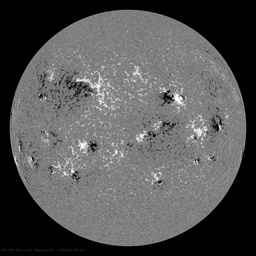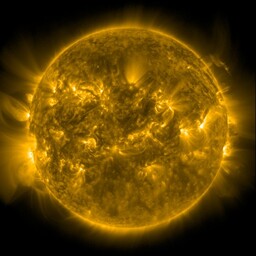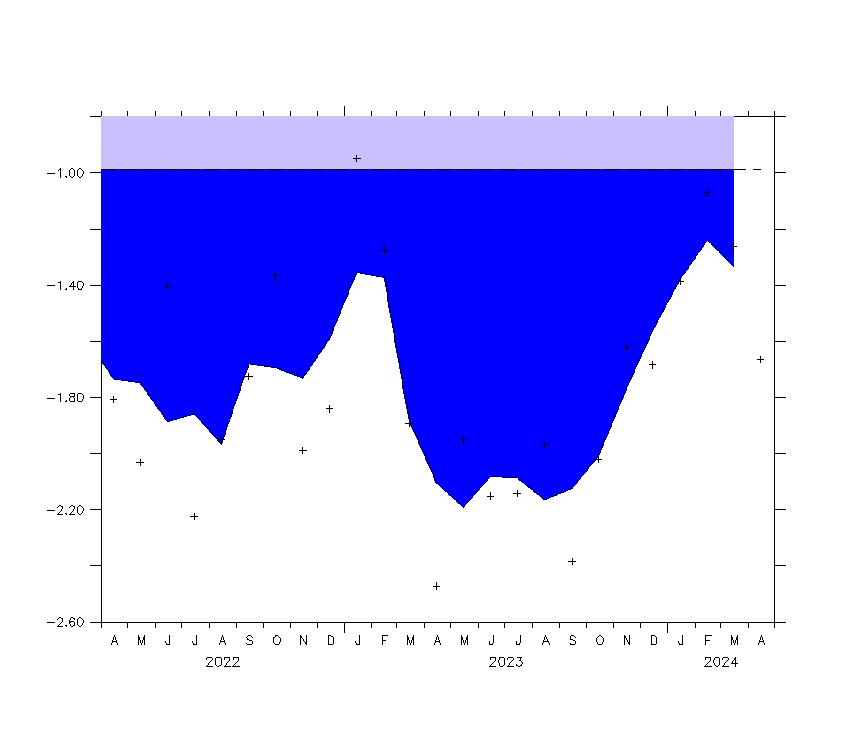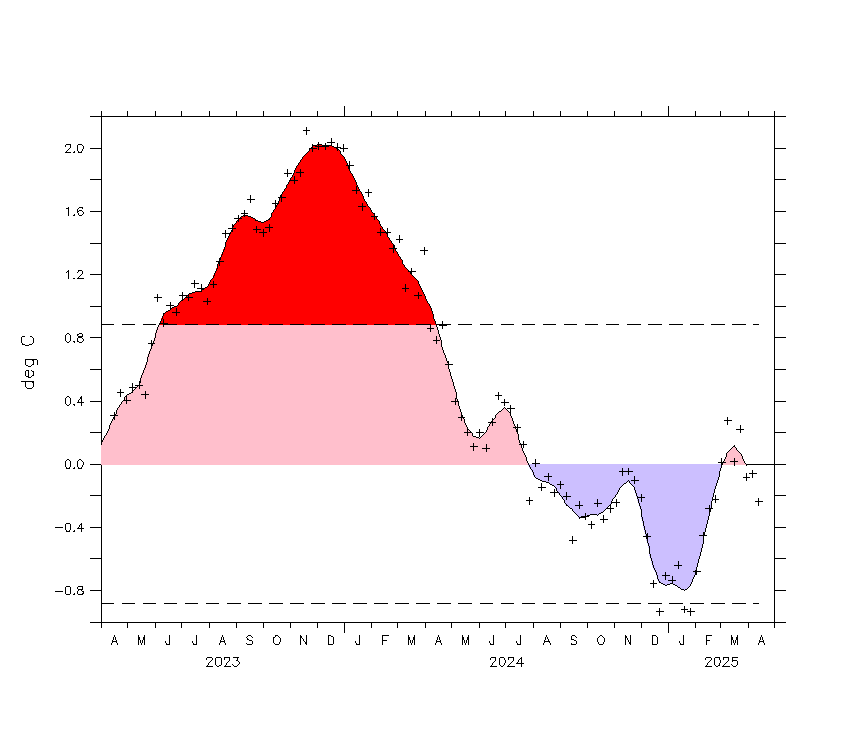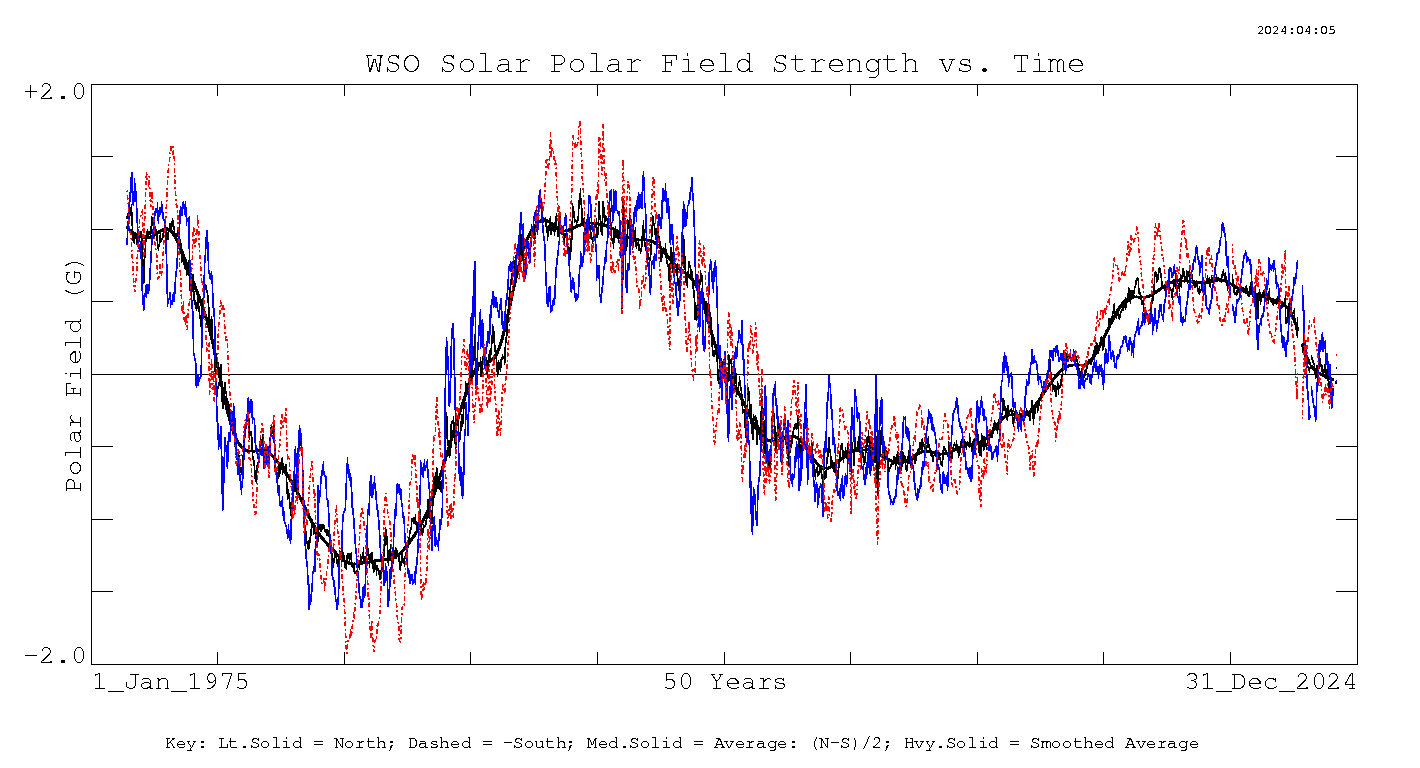Share
Several months ago I attempted to find some sort of data or graph on the angular momentum (AM) of the Jovian planets (J/S/U/N). After an exhaustive search it seemed as though nothing would be forthcoming. While there have been attempts to graph the Jovians using the solar system barycenter (SSB) as the orbit axis point, my research has suggested all the solar system planets orbit the Sun. Using the SSB as an axis point might be useful for some analysis, but it still remains an inaccurate method of calculating a planets AM if the orbit axis point is the Sun. The orbit axis point of the Jovians is still a contentious issue, but I believe the results of this project will add further evidence that indeed the Sun is king.
Using JPL Horizons I can retrieve the necessary XYZ coordinates and velocities and plug them into Gerry's angular momentum formula. Many thanks go to Gerry, this project would not have been possible without him.
It must be noted that the JPL data for each planet uses the Sun centre for calculating distance. Technically this is still not correct and the Sun/Planet barycenter would be more accurate but at this stage I am not aware of this data being in existence.
Jupiter Angular Momentum Graph.
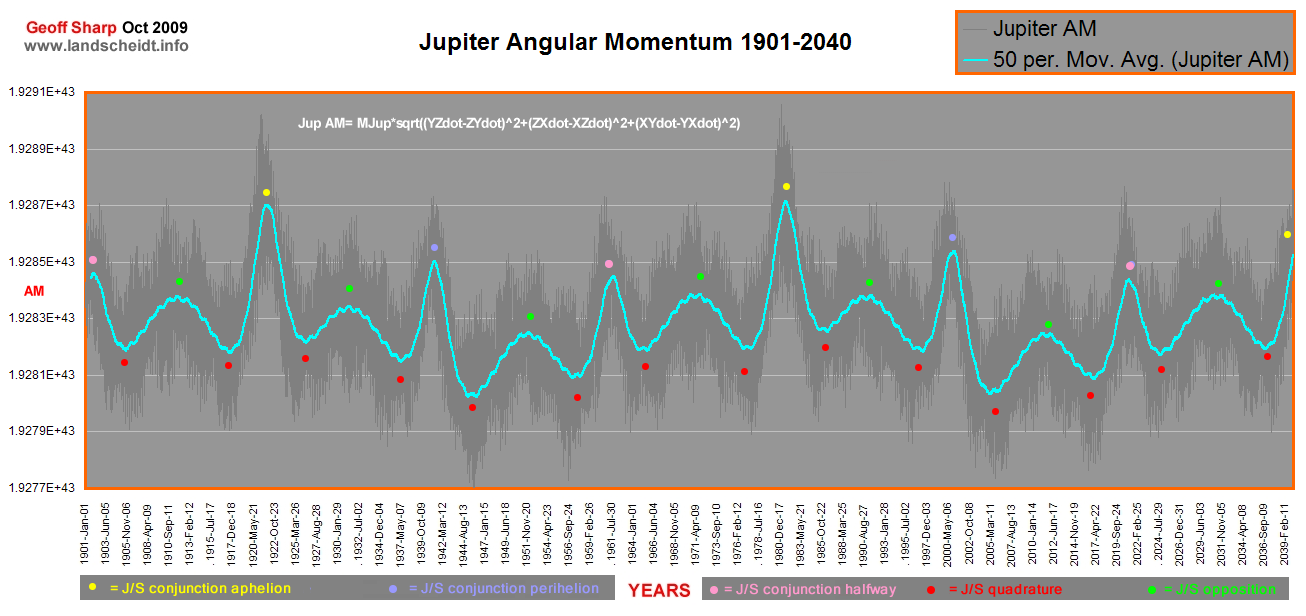
Click on graphs for full size view
Very evident is the influence of Saturn along with the timing of the Jupiter perihelion (closest orbit point) and aphelion. (furthest). The blue line is a moving average with the background grey areas being the actual data taken every 5 days. Because the centre of Sun was used as the axis point the actual data is a little choppy (theory). Although the modulation of the planet AM is obvious, very little of this change would be felt at the Sun. For further data on the Jupiter axis point and orbit perturbations see my previous article here: http://landscheidt.auditblogs.com/2009/04/03/which-point-do-the-jovian-p...
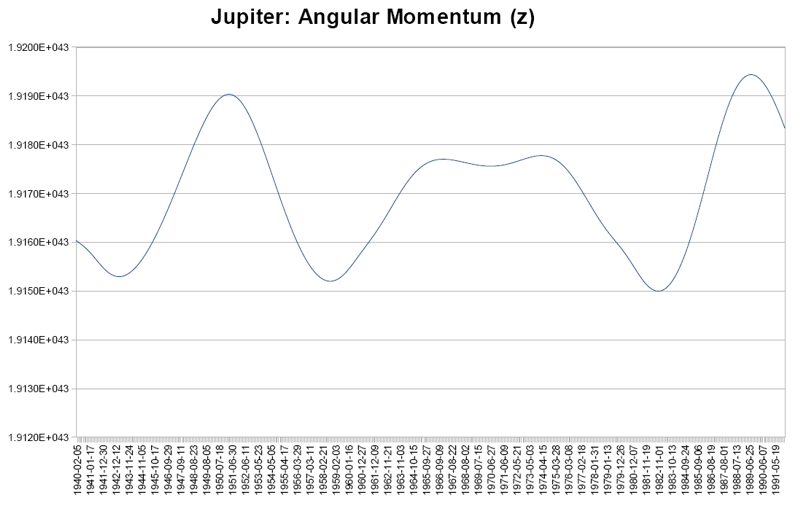
Although over a shorter period the Planet AM graphs using the SSB as axis point showing a clear difference, 1990 being a good point to compare. Jupiter AM graph using SSB showing opposite trend to Sun centred Jupiter AM graph. Source http://arnholm.org/astro/index.htm
Neptune Angular Momentum Graph.
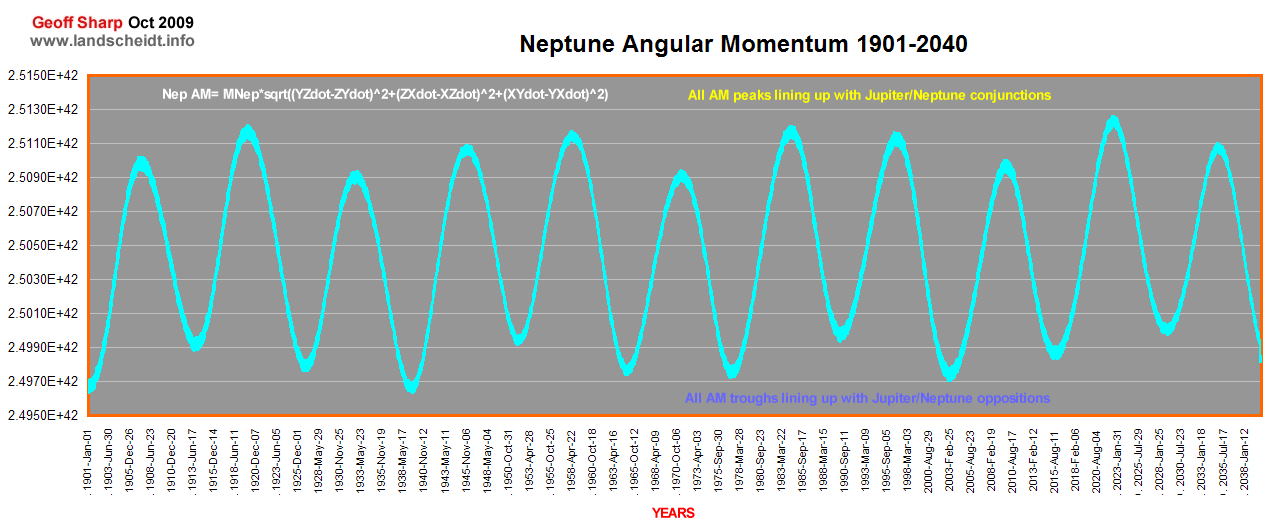
The Neptune angular momentum graph is quite different, being on the outskirts of the solar system the data is less choppy and the clear influence of Jupiter every 13 years approx is quite staggering, although the solar AM is mainly controlled by the overall Jovian positions, there is a secondary "pulse" that lines up with Jupiter conjunctions...it might be interesting to see an overlay of all 4 jovians. The majority of Neptune's orbit perturbations are in line with Jupiter, only the modulation of the peaks and troughs is influenced by the remaining Jovians.
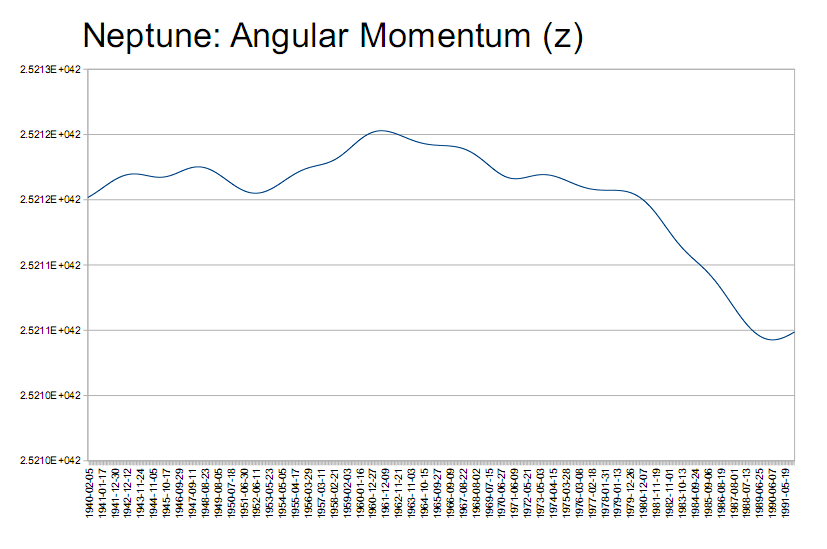
Notice the very clear difference between the 2 axis points, this graph uses the SSB as the axis point.. Source http://arnholm.org/astro/index.htm
The SSB derived Neptune graph is clearly a product of the sun moving away from the SSB and dragging Neptune with it, this gives a false reading in the Neptune distance measurement which can also be seen on the Jupiter SSB graph at 1970. I believe the latest Jovian AM graphs prove the existence of the Jovian orbit axis point and also show the correct planet AM data (as near as possible to date). Another outcome of this research will be to nail down exactly what proportion each planet contributes to the overall AM at the Sun. The project is still incomplete but the Jupiter proportion looks to be about 60%. Saturn and Uranus graphs to follow.
UPDATE: P.A.Semi has a paper at http://arxiv.org/ftp/arxiv/papers/0903/0903.5009.pdf
where he produces graphs of all planets calculating planet AM using both axis points. His data is in complete agreement with mine (using Gerry's formula) and he also shows long term views of the SSB axis graphs.
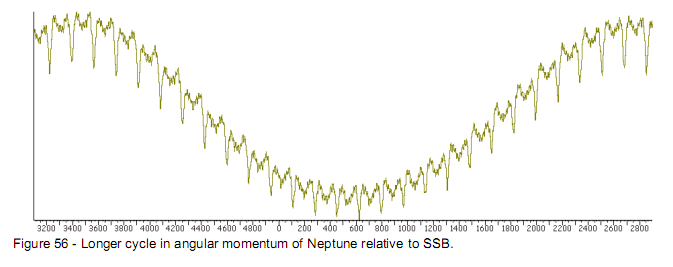
This long term view of Neptune is particularly interesting, its shows the 172 year down spike each time Uranus is in conjunction, which moves Neptune closest to the SSB and also shows a background trend. The elephant in the room though is that all SSB graphs show a modulation of planet/SSB distance, where as the Sun centered graphs show the planetary perturbations. The failure of the SSB centered graphs to show the all important planetary perturbations suggests to me that all our solar system planets have the Sun as their axis point.
Gerry and I are currently working on a project looking for the missing AM that could finally give a solid link to the Spin-Orbit Coupling debate. Our initial results are very encouraging but we need to double check the data…stay tuned.


